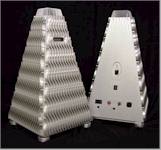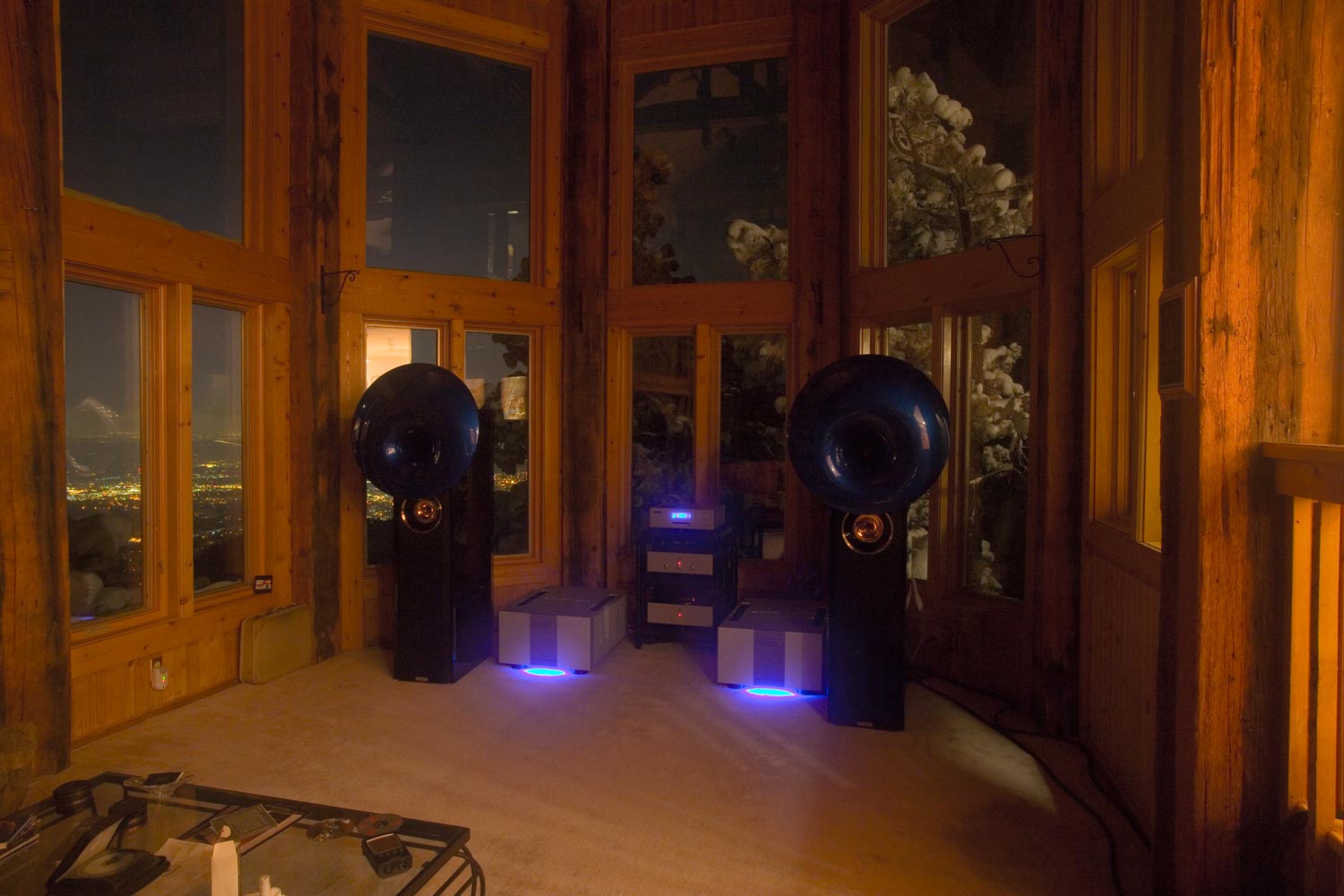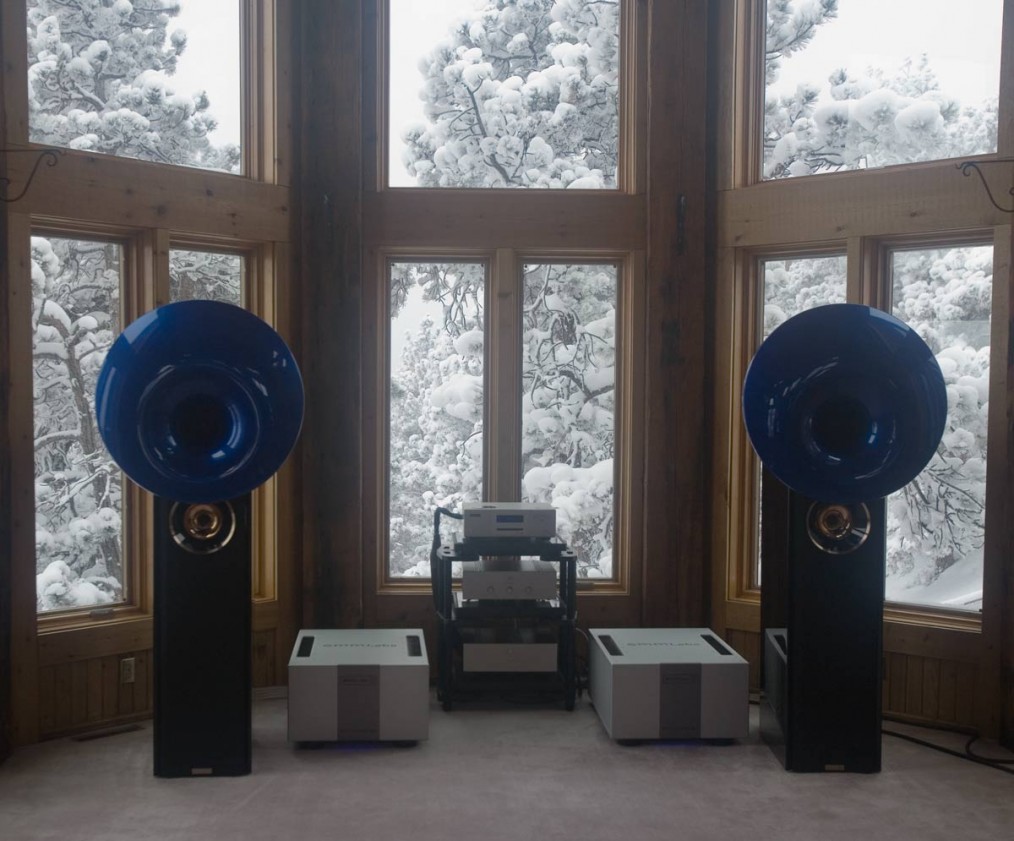The EMM Labs MTRX amplifiers have been on a solid 10 days. With the heavy snow we have been getting, not sure how much longer the power will stay up; so we’re keeping the Audio Note M9 Phono preamplifier in the system, also on for 10 days [i.e. we are waiting for a ‘power event’ to take the opportunity to change out the M9 for the Emm Labs PRE2 preamp [also on for 10 days, just not in this system] so we can hear a 100% (except cables and speakers) Emm Labs system.]
I have been listening to Radiohead ‘In Rainbows’ every day, comparing and contrasting and trying to detect how the amps are breaking in and warming up. We’ve probably heard this CD 50 times in the last couple of years, and a test track off this album several hundred times. We’ve heard it on a couple dozen systems, some much, much more expensive than this.
It is just sounding way different than it ever has before. And I’ve been wracking my poor brain trying to figure out how to describe it. I mean, it is *really* different.
The closest I can come to how different the EMM Labs MTRX amplifiers are is to compare it to a system that we had here for not nearly long enough [another system I had a hard time describing]. This other system had the big Audio Note digital (CDT5, DAC5 Fifth Element and Fifth Force [$200K or thereabouts. BTW, AN has announced they have a way to bring a lot of this kind of DAC quality to their less expensive models]); Audio Note Gaku-On 45 watt 211 amps; the harmonically complete Audio Note M9 Phono pre; Marten Coltrane Supreme I speakers ; and all Nordost Odin cables.
Between the ultra-high-res of the speakers, the true-to-life harmonics and ruthless speaker control of the amps, and the analog-like dynamics and separation of the digital front end – with Odin power cords giving them all the power they needed – it was very dynamic, very high-res and very tuneful. It was a significant step beyond what we, any of us here, had heard before. [and we have heard a lot of great sounding systems before]
At night. The EMM Labs MTRX amps [there is an awesome gentle blue glow underneath the amps, which the camera, and the 30 second time-elapsed exposure I used, has exaggerated here], Audio Note M9 phono pre, Acapella Atlas speakers and EMM Labs XDS1 player
So fast forward to today.
We have the delightfully musical Acapella Atlas speakers; the pure harmonics and ruthless speaker control *and ultra-high-resolution* of the emmLabs MTRX amps; again the harmonically complete Audio Note M9 Phono pre; and the separation and tunefulness of the Emm Labs XDS1 CD / SACD player.
In both systems, we have significant harmonics, significant high-resolution, and significant control, by the amp, of the speaker. Very different sounds and presentations – but similar in that both really excel in ALL the key aspects of music reproduction in ways other systems fail to do.
The EMM Labs MTRX amplifiers have turned our nicely musical Acapella Atlas speakers into high resolution, highly accurate speakers. This is just so weird. When the amps want the speaker to produce a sound, they do not take no for an answer. They drive the speakers to the ragged edge. [the relatively inexpensive Sony SSAR1 that these amps were on at RMAF and CES could be heard stumbling trying to perform what was asked of them, and failing. Not so the Atlas.]
Traditionally, speakers are lazy and amps try to make them do things but the speakers are somewhat reluctant. All the time. [The speakers drive characteristics change on a moment to moment basis depending on what the music is playing that instant]. One of the things we LOVE about the Audio Note amps, especially the larger ones, is that they can control the speaker and make it do what it is supposed to do. This means that notes start, rise, peak and end properly, which means that the dynamics are more true to life – otherwise everything sounds ‘washed out’. For most amps, the ‘washed out’ sound emphasizes easy things, like small percussion-like transients, because that they are able to reproduce – they are just unable to produce the midi-dynamics correctly, stuff like piano notes and guitar notes. You can hear that there was the beginning to a note, but after that, the amps are just taking a wild swing at what the note is supposed to do and moving on to the next note. So you hear a lot of dinka-dinka-dink which are the starts of the notes and then a lot of more-or-less muddy sound that you mentally have to map to the instrument that ‘must have’ made that note.
But the MTRX control the speakers… I am not sure ‘better’ than the Gaku-On amps is the right words, because they are so different [We’ll try our best to describe just how they are different in a future post], but…
It is like the first time you walked into a stereo store and heard a real stereo [this is what I keep unwittingly flashing back to]. There is just so much more information, and the information layering is clearer, and even the length of time various notes are audible is different [because they are not getting overwhelmed by other notes happening at the same time and are able to live out their normal, natural lives].
In our minds we are often trying to compare what we hear to what we heard with Edge solid-state amplifiers. For over 10 years or so we lived with several of them here. We also had a pair of Edge amps in this system immediately before we changed them out for the MTRX [An upgraded pair of Edge M12 monoblock amplifiers, a wonderful amp that performs way above its price class]. The (now defunct) Edge amps were to our ears the best solid state amplifiers made. Other solid-state amps we like are some of the Ayre, Goldmund, and MBL amps. We like amps to have resolution and have some micro-dynamics, midi-dynamics too would be nice. We don’t like most solid-state amps … at all. The bright-sounding amps, the muddy trying-to-never-sound-bright amps, the OK but essentially boring why-bother amps, the bombastic grainy amps, the just plain bad-sounding amps and all the amps that are worse than that. Nope. We don’t. Like. Most. Solid-state amps. At. All.

But we do tolerate a few solid-state amps. In particular, the Edge NL Reference at 800 watts per channel; $125K at the time. The smaller penultimate Edge amps were very high res, but a little laid back dynamically. The big NL Reference (pyramids) kind of balanced this out some, for better or worse. They also took at least 3 days to warm up :-), during which time their sound changed dramatically, which is some of the reason we expected the MTRX to take time to warm up. The NL Refs essentially did everything one would want from a big amp, and did it very well, but were spectacular at none of it [their best feature might be that they did have an enormous ease to them and never sounded grainy or edgy].
The EMM Labs MTRX amplifiers are like the Superman to the Edge NL Reference Clark Kent – it does everything one would want from a big amp, but it does it spectacularly.
It is kind of embarrassing. Who is going to believe it? Absolutely spectacular Dynamics.Absolutely spectacular Resolution, The famous Emm Labs purity to the Harmonics. And it makes it seem so blasted Easy. The 4 basic food groups for amplification, right?
*I* think this is bigger than the EMM Labs CDSA [Remember? Their $10K player that easily beat all other solid-state players at the time, up to and including the big Burmester/Esoteric/dCS $60K players?].
Like the XDS1, the MTRX background is startlingly quiet. The music is very, very clear sounding. You can hear way, way, WAY into the music [I find myself thinking ‘you jokers!’ to Radiohead because of all the shenanigans they play with weird noises in the very deep subtle backgrounds of the main melodies].
The primary change I hear after 10 days of warm up is that the characteristic Emm Labs ‘tonal purity’ has been enhanced. You could definitely hear it 10 days ago – but now it calls attention to itself. Just like when you hear an instrument in real life. The tone man. The Tone!
Moving forward, I am going to have to start listening to a different CD. I keep getting distracted by my enjoyment of the music and forgetting I am supposed to be figuring out how these amps sound different than other amps. Maybe we’ll put on one of Neli’s CDs that are really, really, really.. you know… boring(?) next 🙂 [No, of course I won’t say which ones. What? Do you think I’m nuts??? ;-)]
The Emm Labs MTRX amplifiers are $130K. The two-box Audio Note M9 Phono full function preamplifier is $145K or thereabouts [our several year-old demo model is available at a very nice price. North America only. Sorry.] And … our demo Acapella Atlas speakers are also available. We would love to move the Atlas to a new home before CES. Email us or call Neli for details 303-546-6503].
Oh, and the Edge M12 monoblock amplifiers; a wonderful amp that performs way above its price class, on consignment also at a very reasonable price].
Sunshine! Yay! [about 69% of our days are sunny here. Pretty near the top of the sunniest cities in the U.S (Wow, Yuma!). We get glum and gloomy when there isn’t any sun out 🙁 ].






